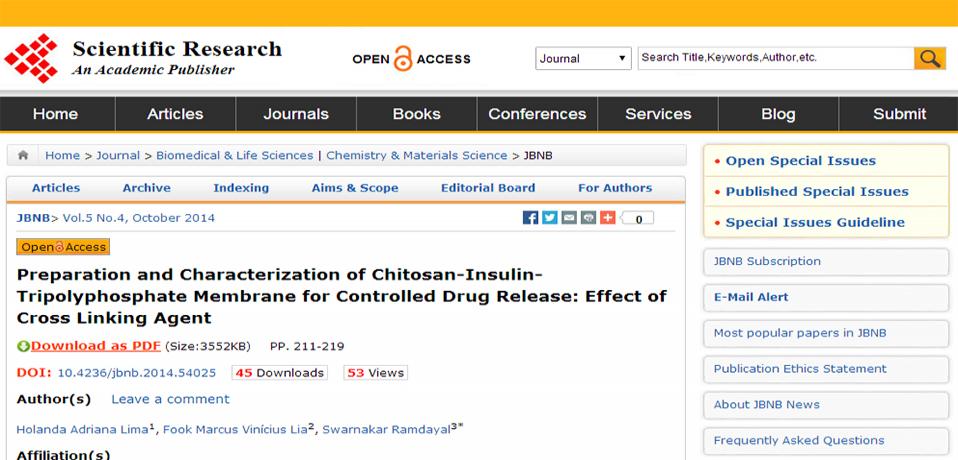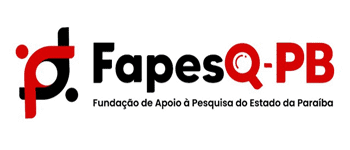Preparation and Characterization of Chitosan-Insulin-Tripolyphosphate Membrane for Controlled Drug Release: Effect of Cross Linking Agent
Author(s):
Holanda Adriana Lima¹, Fook Marcus Vinícius Lia², Swarnakar Ramdayal³*
ABSTRACT
The term Diabetes Mellitus (DM) comprises a group of metabolic disorders characterized by chronic hyperglycemia resulting from defects in the secretion and/or action of insulin. The Insulin therapy constitutes the preferred treatment for DM, consisting of daily subcutaneous insulin injections to control blood glucose levels. The chitosan studied for Biomedicine is a biomaterial that can be used for controlled release of drugs whose release rate can be controlled by Sodium Tripolyphosphate (TPP), which is an ionic cross linker of the chitosan. Present study, therefore, was aimed to develop and evaluate membranes of chitosan and chitosan cross linked by TPP for use in controlled release of insulin system, with the purpose of obtaining an alternative to the injectable administration of this drug. The developed membranes were characterized by the techniques of Fourier Transform Infrared spectroscopy (FTIR), Scanning Electron Microscopy (SEM), Energy Dispersive X-ray Spectroscopy (EDX), High Performance Liquid Chromatography (HPLC) and Evaluation of Cell Viability of Macrophages (MTT). With the FTIR technique the interaction between chitosan, tripolyphosphate and insulin was identified. Chemical elements present in chitosan, insulin and sodium tripolyphosphate membranes were detected by EDX technique. By SEM technique, the changes in the morphology of the membrane containing insulin, with the presence of granular particles of varying sizes, could be observed when compared to pure chitosan. With HPLC assay insulin was identified and it was shown that it gets separated from chitosan membrane even when the membrane was cross linked by the TPP, though at a reduced rate. The crosslinking agent was effective to control the rate of insulin release. The biocompatibility of the prepared membranes was confirmed by cell viability of macrophages using the MTT assay. The developed membranes, therefore, have potential for use as a biomaterial in controlled release systems for insulin.
Disponível em: https://www.scirp.org/pdf/JBNB_2014093015335723.pdf
Comments are closed.


